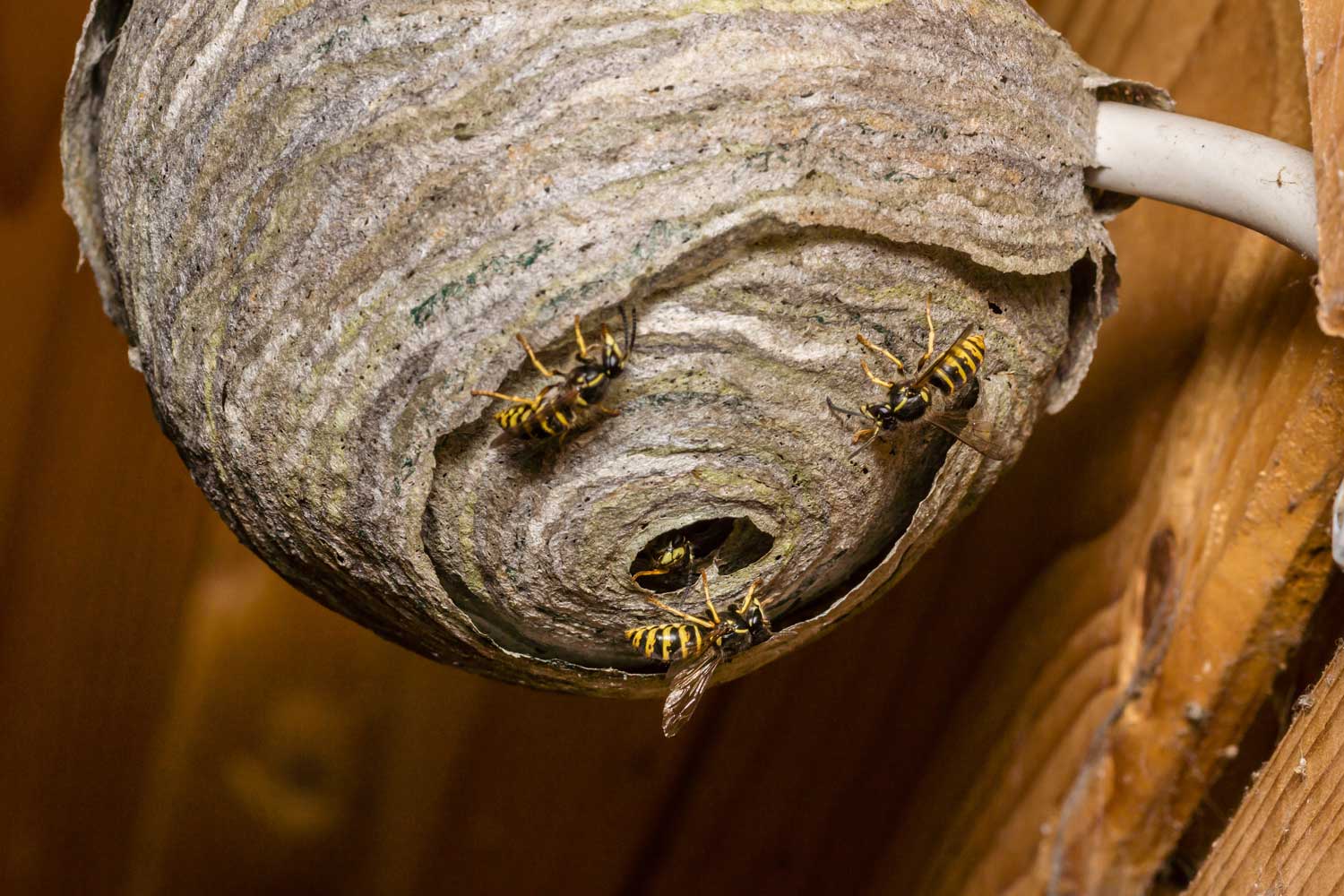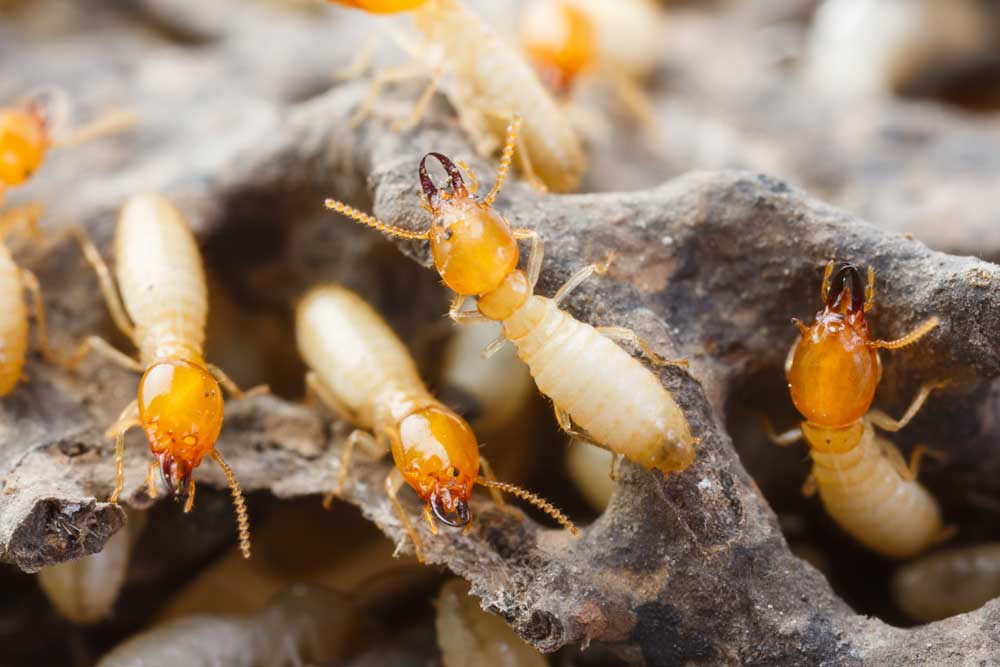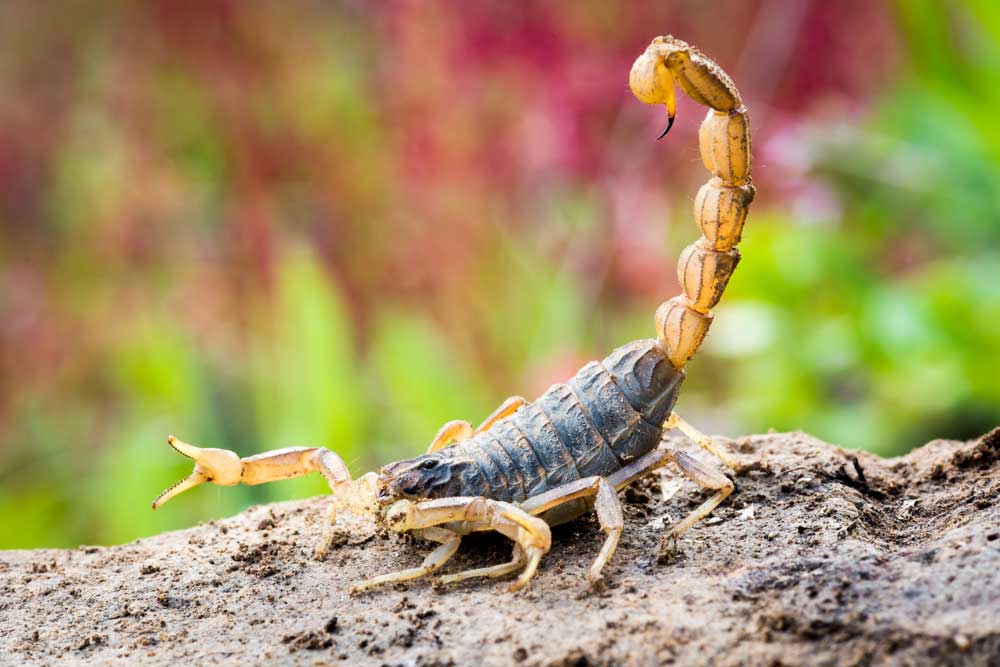What are stinging insects?
A stinging insect is characterized by its stinger located at the end of its abdomen. There are many different species of stinging insects, and these pests typically have a round body segmented into the head, thorax, and abdomen, along with six legs.
Around Round Rock, TX, and its surrounding areas, many different types of stinging insects exist. Keep an eye out for the following species:
- Wasps: Wasps are narrow-waisted insects that have a stinger at the end of their abdomen and are either solitary or social; there are hundreds of subspecies of wasps.
- Paper wasps: Also called a red wasp, this species grows to around an inch in length and has a smokey brown or black coloration; their nests are made out of plant fibers and look like paper.
- Yellow jackets: This stinging insect is easily recognized by their thinner bodies, smaller overall size, and yellow and black striped pattern.
- Mud daubers: Mud daubers are thread-waisted, meaning they have a very thin segment connecting their thorax and abdomen, and they are typically black in color with a pale blue luster.
- Cicada killers: This species is large, growing to around two inches in length, and they are black or dark brown with yellow markings on their abdomen.

Are stinging insects
dangerous?
Insect bites and stings delivered by all kinds of stinging insects are dangerous, and an infestation of these pests on your property increases your risk of receiving a dangerous sting. Not only are stings painful, but they can trigger allergic reactions even in individuals without preexisting allergic conditions due to the tendency of stinging insects to swarm their victim and sting multiple times.
Anyone experiencing symptoms such as excessive pain, swelling, or difficulty breathing and swallowing after receiving a stinging insect sting should seek immediate medical attention.
Why do I have a stinging insect problem?
Stinging insects in Round Rock, TX, and its surrounding areas are typically attracted to properties with plenty of sweet-smelling flowers, pest prey like ants and spiders, moisture issues, and overgrown areas to hide in. Take steps to eliminate stinging insect attractants to deter infections.
Where will I find stinging insects?
Stinging insects are commonly found nesting high up in trees, around the eaves of decks, patios, and garages, and in outbuildings. They may also be found nesting in holes in the ground or around fallen trees, and some stinging insects may make their nests around interior areas such as attics and the spaces between walls.
How do I get rid of stinging insects?
Professional wasp control provided by EvoFoam Pest Control is the best way to get rid of stinging insects without exposing yourself to the risk of stings. Our service professionals will evaluate your property’s stinging insect control needs and provide you with effective home pest control and commercial pest control solutions.
Contact us today for a free consultation and estimate.
How can I prevent stinging insects in the future?
Protect your property from stinging insect problems in the future by following easy prevention steps such as cutting down long grasses and clearing overgrown foliage from outdoor areas. Combine this with the removal of debris and woodpiles to eliminate stinging insect hiding spots.
You should address stinging insect pest prey infestations with the help of EvoFoam Pest Control, address moisture issues around interior and exterior areas, clean up food and drink spills promptly, and invest in window and door screens to keep stinging insects out of interior spaces. You can also replace sweet-smelling flowers around your property with plants stinging insects hate such as citronella and marigolds.






